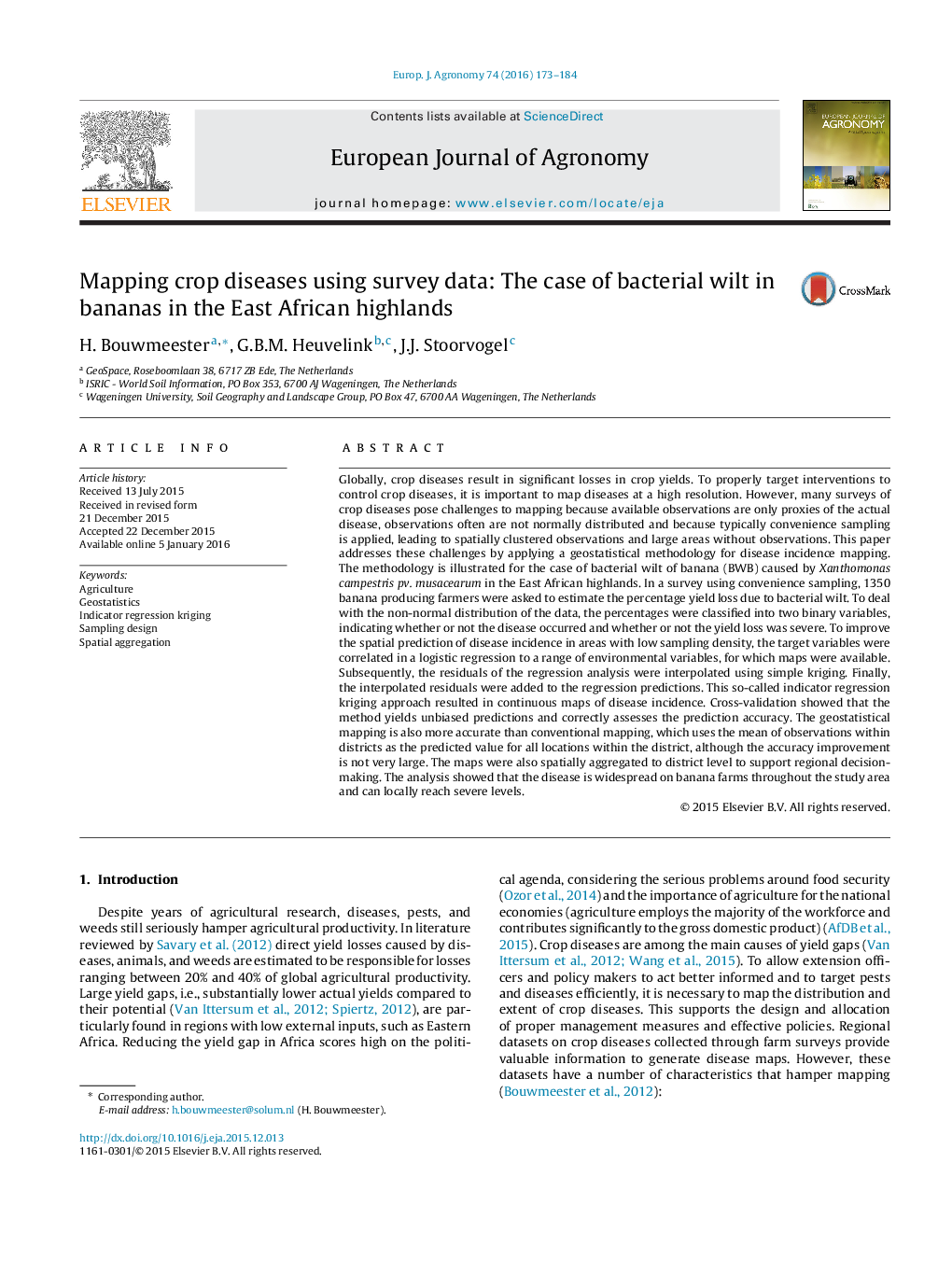| کد مقاله | کد نشریه | سال انتشار | مقاله انگلیسی | نسخه تمام متن |
|---|---|---|---|---|
| 4508791 | 1624451 | 2016 | 12 صفحه PDF | دانلود رایگان |
• Bacterial wilt is a widespread disease with locally severe impacts on banana farms in the East African highlands.
• The choice of methods for spatial interpolation and aggregation can have a large influence on the outcomes of disease mapping.
• Indicator regression kriging can efficiently map the spatial distribution of plant diseases and quantify the associated accuracy.
• Exploiting relationships between disease incidence and environmental variables can overcome common limitations of disease sampling.
• Clustered sampling is logistically practical but may lead to large map inaccuracy.
Globally, crop diseases result in significant losses in crop yields. To properly target interventions to control crop diseases, it is important to map diseases at a high resolution. However, many surveys of crop diseases pose challenges to mapping because available observations are only proxies of the actual disease, observations often are not normally distributed and because typically convenience sampling is applied, leading to spatially clustered observations and large areas without observations. This paper addresses these challenges by applying a geostatistical methodology for disease incidence mapping. The methodology is illustrated for the case of bacterial wilt of banana (BWB) caused by Xanthomonas campestris pv. musacearum in the East African highlands. In a survey using convenience sampling, 1350 banana producing farmers were asked to estimate the percentage yield loss due to bacterial wilt. To deal with the non-normal distribution of the data, the percentages were classified into two binary variables, indicating whether or not the disease occurred and whether or not the yield loss was severe. To improve the spatial prediction of disease incidence in areas with low sampling density, the target variables were correlated in a logistic regression to a range of environmental variables, for which maps were available. Subsequently, the residuals of the regression analysis were interpolated using simple kriging. Finally, the interpolated residuals were added to the regression predictions. This so-called indicator regression kriging approach resulted in continuous maps of disease incidence. Cross-validation showed that the method yields unbiased predictions and correctly assesses the prediction accuracy. The geostatistical mapping is also more accurate than conventional mapping, which uses the mean of observations within districts as the predicted value for all locations within the district, although the accuracy improvement is not very large. The maps were also spatially aggregated to district level to support regional decision-making. The analysis showed that the disease is widespread on banana farms throughout the study area and can locally reach severe levels.
Journal: European Journal of Agronomy - Volume 74, March 2016, Pages 173–184
